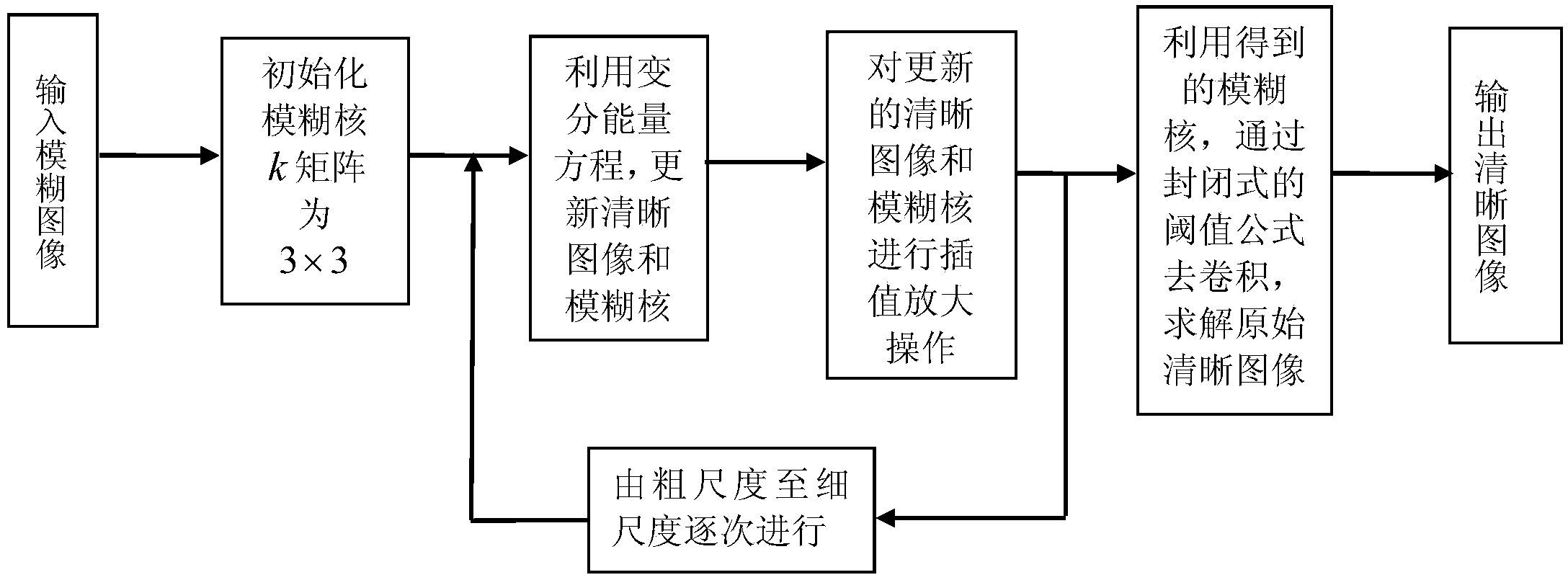Norm ratio regularization based rapid image blind deblurring method
A blind deblurring and ratio technology, applied in the field of fast image blind deblurring based on norm ratio regularization, can solve problems such as complexity, difficult solution process, and poor restoration effect
- Summary
- Abstract
- Description
- Claims
- Application Information
AI Technical Summary
Problems solved by technology
Method used
Image
Examples
Embodiment Construction
[0050] refer to figure 1 , the fast image blind deblurring method based on norm ratio regularization of the present invention, comprises the following steps:
[0051] Step 1: Input blurred image.
[0052] Step 2: Initialize the size of the fuzzy kernel k matrix as 3×3. The multi-scale is determined by the size of the blur kernel. If the size of the blur kernel corresponding to a certain blurred image is h×h, the size of the blur kernel is 3×3 or less in the coarse scale. The rate increases to h×h at a fine scale, and interpolation and updating are performed at different scales.
[0053] Step 3: Use the norm ratio l 1 / 2 / l 2 The regularization term of is used as prior knowledge, and a multi-scale method is used to estimate the blur kernel:
[0054] (3a) Build a solution model:
[0055] Given the fuzzy function f, using the discrete filter▽ x =[1,-1],▽ y =[1;-1], generate high-frequency image information y=[▽ x f,▽ y f], using the variational energy equation (TV model),...
PUM
 Login to View More
Login to View More Abstract
Description
Claims
Application Information
 Login to View More
Login to View More - R&D
- Intellectual Property
- Life Sciences
- Materials
- Tech Scout
- Unparalleled Data Quality
- Higher Quality Content
- 60% Fewer Hallucinations
Browse by: Latest US Patents, China's latest patents, Technical Efficacy Thesaurus, Application Domain, Technology Topic, Popular Technical Reports.
© 2025 PatSnap. All rights reserved.Legal|Privacy policy|Modern Slavery Act Transparency Statement|Sitemap|About US| Contact US: help@patsnap.com



